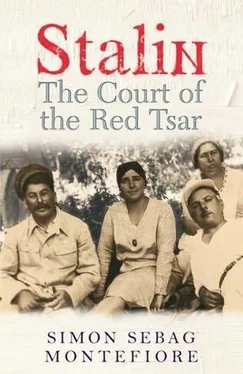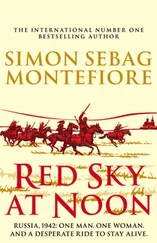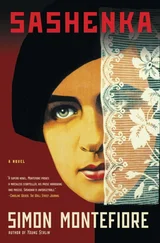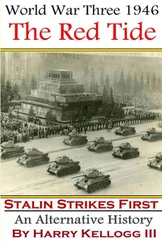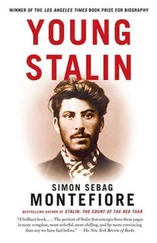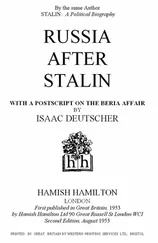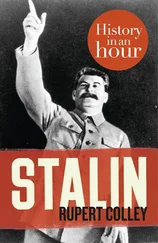The city of Tsaritsyn played a decisive role in Stalin’s career—and his marriage. In 1918, the key strategic city on the Lower Volga, the gateway to the grain (and oil) of the North Caucasus and the southerly key to Moscow, looked as if it was likely to fall to the Whites. Lenin despatched Stalin to Tsaritsyn as Director-General of Food Supplies in south Russia. But the latter soon managed to get his status raised to Commissar with sweeping military powers.
In an armoured train, with 400 Red Guards, Fyodor Alliluyev and his teenage typist Nadya, Stalin steamed into Tsaritsyn on 6 April to find the city beset with ineptitude and betrayal. Stalin showed he meant business by shooting any suspected counter-revolutionaries: “a ruthless purge of the rear,” wrote Voroshilov, “administered by an iron hand.”
Lenin ordered him to be ever more “merciless” and “ruthless.” Stalin replied: “Be assured our hand will not tremble.” It was here that Stalin grasped the convenience of death as the simplest and most effective political tool but he was hardly alone in this: during the Civil War, the Bolsheviks, clad in leather boots, coats and holsters, embraced a cult of the glamour of violence, a macho brutality that Stalin made his own. It was here too that Stalin met and befriended Voroshilov and Budyonny, both at that dinner on 8 November 1932, who formed the nucleus of his military and political support. When the military situation deteriorated in July, Stalin effectively took control of the army: “I must have military powers.” This was the sort of leadership the Revolution required to survive but it was a challenge to Trotsky who had created his Red Army with the help of so-called “military experts,” ex-Tsarist officers. Stalin distrusted these useful renegades and shot them whenever possible.
He resided in the plush lounge carriage that had once belonged to a Gypsy torch singer who decorated it in light blue silk. Here Nadya and Stalin probably became lovers. She was seventeen, he was thirty-nine. It must have been a thrilling, terrifying adventure for a schoolgirl. When they arrived, Stalin used the train as his headquarters: it was from here that he ordered the constant shootings by the Cheka. This was a time when women accompanied their husbands to war: Nadya was not alone. Voroshilov and Budyonny’s wives were in Tsaritsyn too.
Stalin and these swashbucklers formed a “military opposition” against Trotsky whom he revealingly called an “operetta commander, a chatterbox, ha-ha-ha!” When he arrested a group of Trotsky’s “specialists” and imprisoned them on a barge on the Volga, Trotsky angrily objected. The barge sank with all aboard. “Death solves all problems,” Stalin is meant to have said. “No man, no problem.” It was the Bolshevik way. [11] Stalin later seemed to confirm the story of the sinking barge in a fascinating letter to Voroshilov: “The summer after the assassination attempt on Lenin we… made a list of officers whom we gathered in the Manege… to shoot en masse… So the Tsaritsyn barge was the result not of the struggle against military specialists but momentum from the centre…” Five future Second World War marshals fought at Tsaritsyn: in ascending competence—Kulik, Voroshilov, Budyonny, Timoshenko and Zhukov (though the latter fought there in 1919 after Stalin’s departure).
Lenin recalled Stalin. It did not matter that he had probably made things worse, wasted the expertise of Tsarist officers and backed a crew of sabre-waving daredevils. Stalin had been ruthless—the merciless application of pressure was what Lenin wanted. But the “Oddball” kinto had glimpsed the glory of the Generalissimo. More than that, the enmity with Trotsky and the alliance with the “Tsaritsyn Group” of cavalrymen were seminal: perhaps he admired Voroshilov and Budyonny’s macho devil-may-care courage, a quality he lacked. His loathing for Trotsky became one of the moving passions of his life. He married Nadya on his return, moving into a modest Kremlin flat (shared with the whole Alliluyev family) and, later, a fine dacha named Zubalovo. 9
In May 1920, Stalin was appointed Political Commissar to the South-Western Front after the Poles had captured Kiev. The Politburo ordered the conquest of Poland to spread the Revolution westwards. The commander of the Western Front pushing on Warsaw was a brilliant young man named Mikhail Tukhachevsky. When Stalin was ordered to transfer his cavalry to Tukhachevsky, he refused until it was already too late. The vendettas reverberating from this fiasco ended in slaughter seventeen years later. 10
In 1921, Nadya showed her Bolshevik austerity by walking to hospital, where she gave birth to a son, Vasily, followed five years later by a daughter, Svetlana. Nadya meanwhile worked as a typist in Lenin’s office where she was to prove very useful in the coming intrigues.
* * *
The “vanguard” of Bolsheviks, many young and now blooded by the brutality of that struggle, found themselves a tiny, isolated and embattled minority nervously ruling a vast ruined Empire, itself besieged by a hostile world. Contemptuous of the workers and peasants, Lenin was nonetheless surprised to discover that neither of these classes supported them. Lenin thus proposed a single organ to rule and oversee the creation of socialism: the Party. It was this embarrassing gap between reality and aspiration that made the Party’s quasi-religious fidelity to ideological purity so important, its military discipline so obligatory.
In this peculiar dilemma, they improvised a peculiar system and sought solace in a uniquely peculiar view of the world. The Party’s sovereign organ was the Central Committee (CC), the top seventy or so officials, who were elected annually by Party Congresses which, later, were held ever less frequently. The CC elected the small Politburo, a super–War Cabinet that decided policy, and a Secretariat of about three Secretaries to run the Party. They directed the conventional government of a radically centralized, vertical one-Party State: Mikhail Kalinin, born in 1875, the only real peasant in the leadership, known as the “All-Union peasant elder,” became Head of State in 1919. [12] Stalin was never the titular Head of State of the Soviet Union, nor was Lenin. Kalinin’s title was the Chairman of the Central Executive Committee, technically the highest legislative body, but he was colloquially the “President.” After the 1936 Constitution, his title was Chairman of the Presidium of the Supreme Soviet. Only with the Brezhnev Constitution did the Secretary-General of the Party add the Presidency to his titles. The Bolsheviks coined a new jargon of acronyms in their effort to create a new sort of government. People’s Commissars ( Narodny Komissar) were known as Narkoms . The government or Council (Soviet) of People’s Commissars was known as Sovnarkom .
Lenin ran the country as Premier, the Chairman of the Council of People’s Commissars, a cabinet of ministers which executed the Politburo’s orders. There was a sort of democracy within the Politburo but after the desperate crises of the Civil War, Lenin banned factions. The Party frantically recruited millions of new members but were they trustworthy? Gradually, an authoritarian bureaucratic dictatorship took the place of the honest debates of earlier days but in 1921, Lenin, that superlative improviser, restored a degree of capitalism, a compromise called the New Economic Policy (NEP), to save the regime.
In 1922, Lenin and Kamenev engineered the appointment of Stalin as General Secretary—or Gensec —of the CC to run the Party. Stalin’s Secretariat was the engine room of the new state, giving him extensive powers: he demonstrated these in the “Georgian Affair” when he and Sergo annexed Georgia, which had seceded from the Empire, and then imposed their will on the independent-minded Georgian Party. Lenin was disgusted but his stroke in December 1922 prevented him moving against Stalin. The Politburo, taking control of the health of the Party’s greatest asset, banned him from working more than ten minutes a day. When Lenin tried to do more, Stalin insulted Lenin’s wife Krupskaya, a tantrum that could have ended his career. [13] Stalin’s row with Lenin’s wife, Krupskaya, outraged Lenin’s bourgeois sentiments. But Stalin thought it was entirely consistent with Party culture: “Why should I stand on my hind legs for her? To sleep with Lenin does not mean you understand Marxism-Leninism. Just because she used the same toilet as Lenin…” This led to some classic Stalin jokes, in which he warned Krupskaya that if she did not obey, the Central Committee would appoint someone else as Lenin’s wife. That is a very Bolshevik concept. His disrespect for Krupskaya was probably not helped by her complaints about Lenin’s flirtations with his assistants, including Yelena Stasova, the one whom Stalin threatened to promote to “wife.”
Читать дальше
